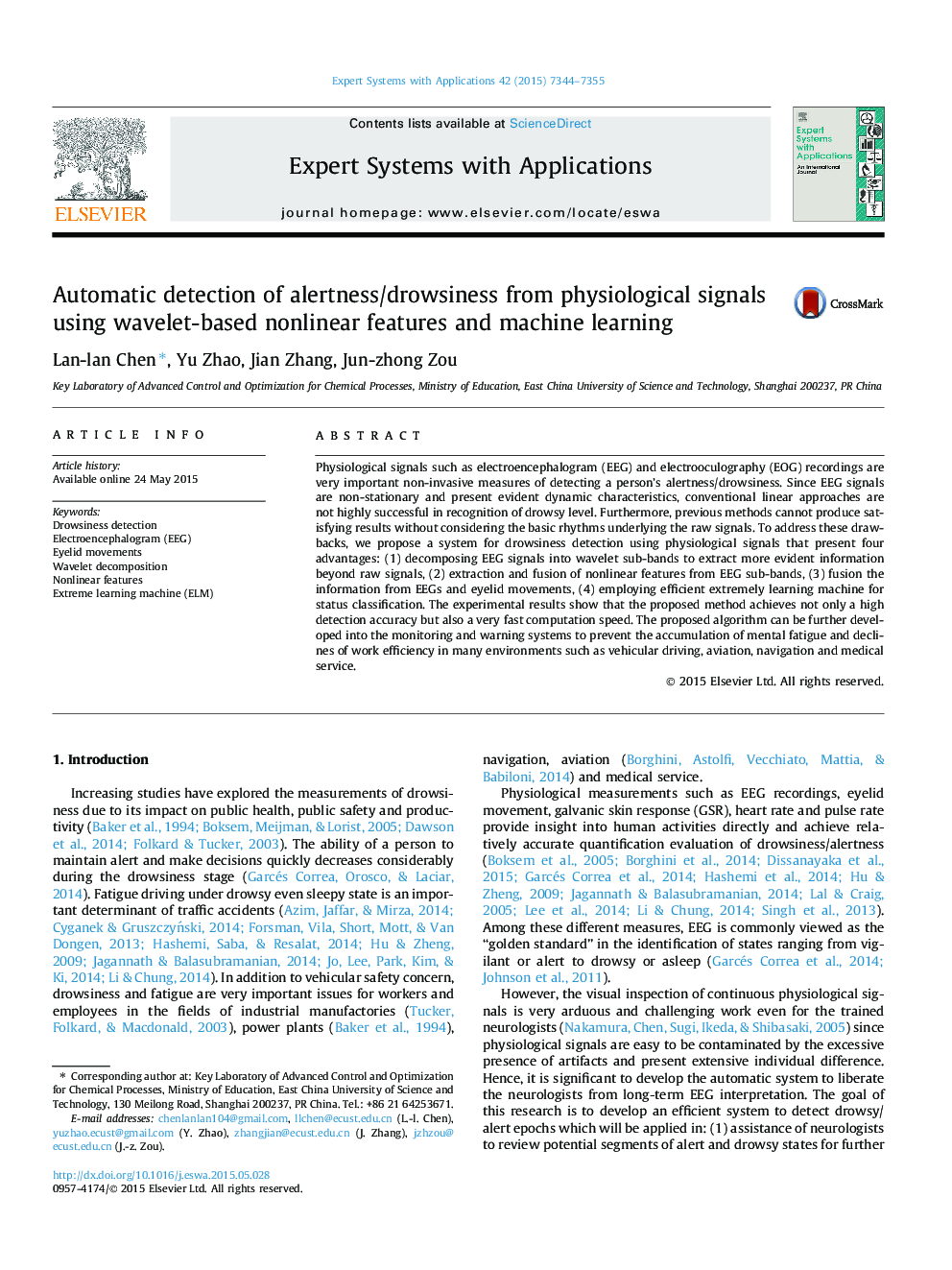| Article ID | Journal | Published Year | Pages | File Type |
|---|---|---|---|---|
| 10322187 | Expert Systems with Applications | 2015 | 12 Pages |
Abstract
Physiological signals such as electroencephalogram (EEG) and electrooculography (EOG) recordings are very important non-invasive measures of detecting a person's alertness/drowsiness. Since EEG signals are non-stationary and present evident dynamic characteristics, conventional linear approaches are not highly successful in recognition of drowsy level. Furthermore, previous methods cannot produce satisfying results without considering the basic rhythms underlying the raw signals. To address these drawbacks, we propose a system for drowsiness detection using physiological signals that present four advantages: (1) decomposing EEG signals into wavelet sub-bands to extract more evident information beyond raw signals, (2) extraction and fusion of nonlinear features from EEG sub-bands, (3) fusion the information from EEGs and eyelid movements, (4) employing efficient extremely learning machine for status classification. The experimental results show that the proposed method achieves not only a high detection accuracy but also a very fast computation speed. The proposed algorithm can be further developed into the monitoring and warning systems to prevent the accumulation of mental fatigue and declines of work efficiency in many environments such as vehicular driving, aviation, navigation and medical service.
Keywords
Related Topics
Physical Sciences and Engineering
Computer Science
Artificial Intelligence
Authors
Lan-lan Chen, Yu Zhao, Jian Zhang, Jun-zhong Zou,
